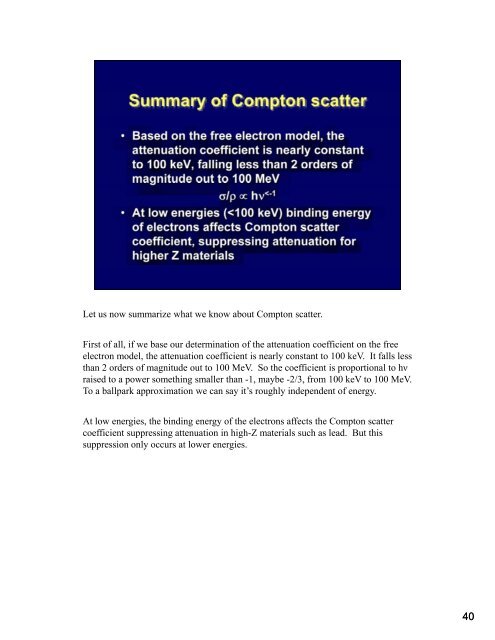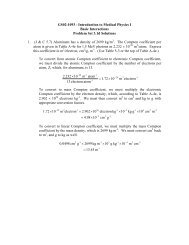link to lecture transcript - UT-H GSBS Medical Physics Class Site
link to lecture transcript - UT-H GSBS Medical Physics Class Site
link to lecture transcript - UT-H GSBS Medical Physics Class Site
Create successful ePaper yourself
Turn your PDF publications into a flip-book with our unique Google optimized e-Paper software.
Let us now summarize what we know about Comp<strong>to</strong>n scatter.<br />
First of all, if we base our determination of the attenuation coefficient on the free<br />
electron model, the attenuation coefficient is nearly constant <strong>to</strong> 100 keV. It falls less<br />
than 2 orders of magnitude out <strong>to</strong> 100 MeV. So the coefficient is proportional <strong>to</strong> hν<br />
raised <strong>to</strong> a power something smaller than -1, maybe -2/3, from 100 keV <strong>to</strong> 100 MeV.<br />
To a ballpark approximation we can say it’s roughly independent of energy.<br />
At low energies, the binding energy of the electrons affects the Comp<strong>to</strong>n scatter<br />
coefficient suppressing attenuation in high-Z materials such as lead. But this<br />
suppression only occurs at lower energies.<br />
40





